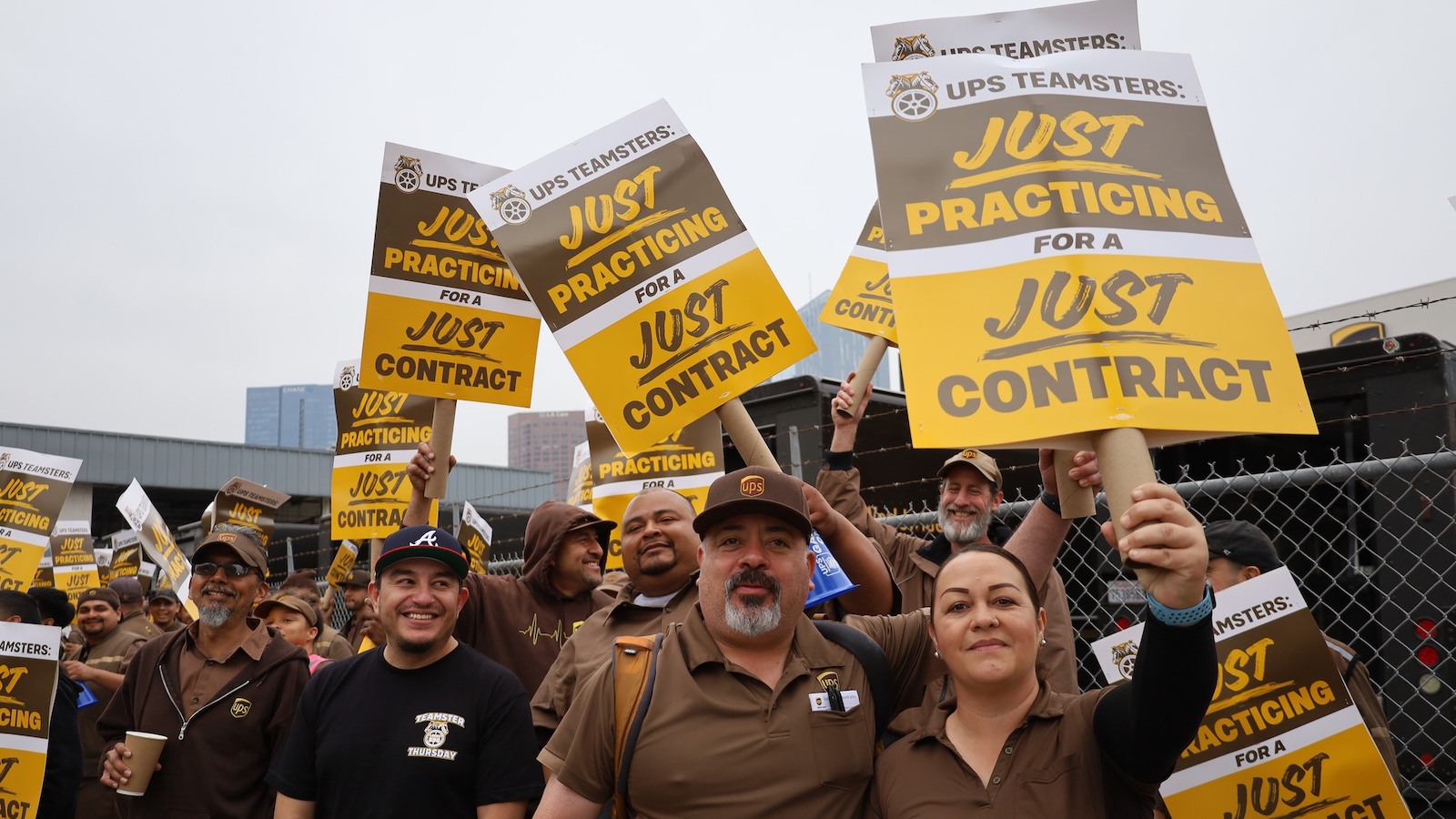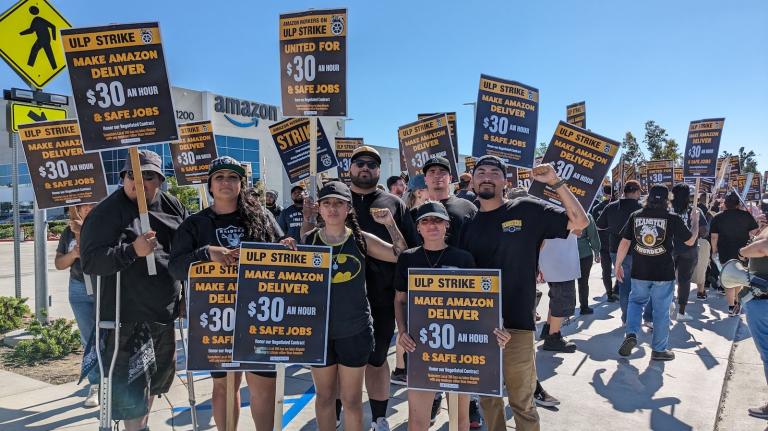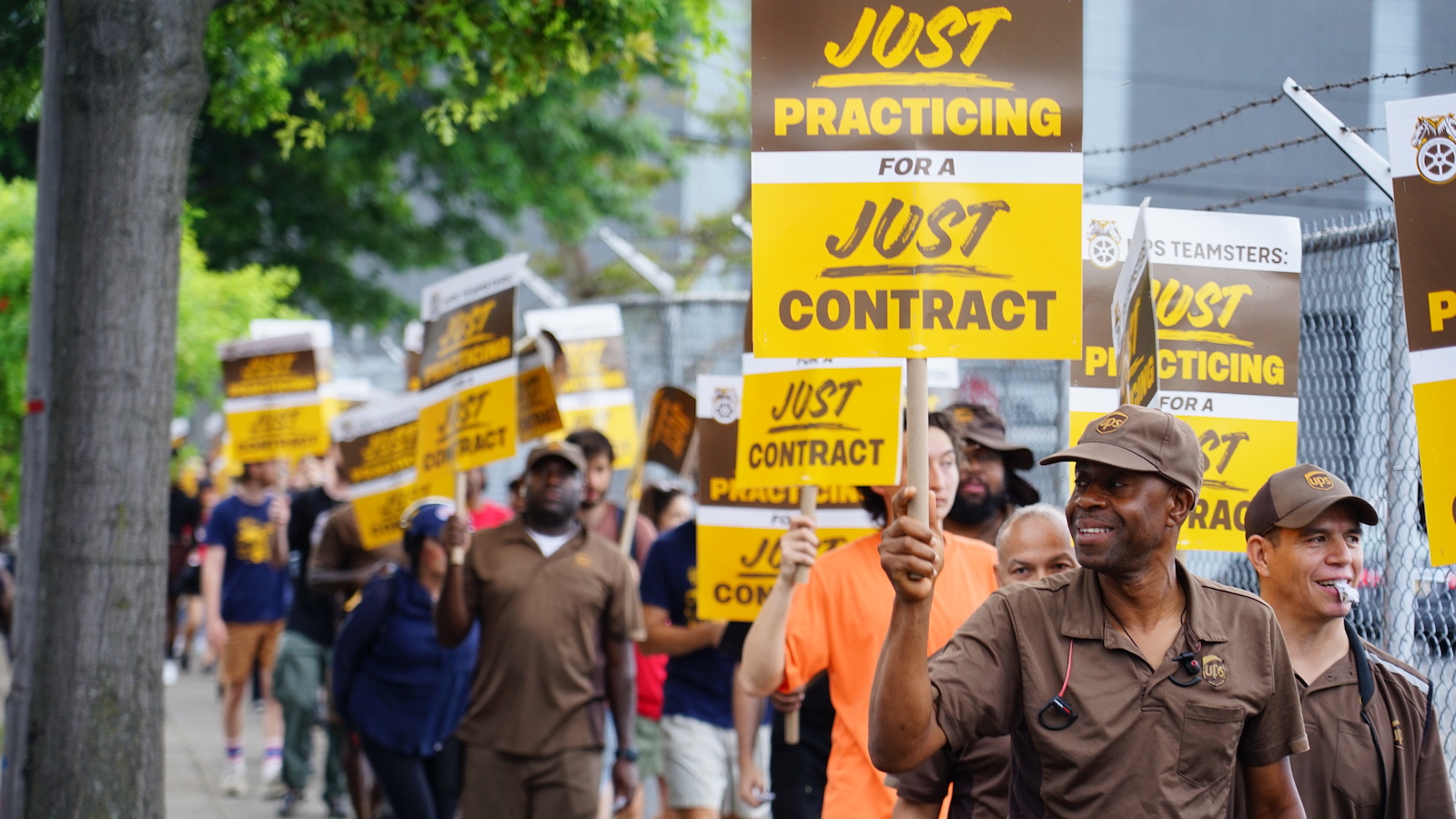This story is part of Record High, a Grist series examining extreme heat and its impact on how — and where — we live.
During a summer that has already shattered temperature records, the 340,000 drivers, dispatchers, and warehouse workers currently in contract negotiations with UPS — the United States’ largest unionized employer — have made climate change and extreme heat a headline labor issue. And if they don’t secure a contract by July 31, they are poised to initiate the largest single-employer strike in U.S. history.
On summer days, the back of a delivery truck can exceed 120 degrees Fahrenheit. When Viviana Gonzalez, a package delivery driver for United Postal Service in Los Angeles, pulls open the back of her truck, she often thinks: “Am I going to pass out back here? Will anybody find out that I’m here in the back of the truck?”
Gonzalez is all too aware of how dangerous her job can be. Since 2015, UPS has reported at least 143 heat-related injuries to the federal Occupational Safety and Health Administration. Last year, one of her co-workers, Esteban Chavez, died of heat stroke in his delivery truck after delivering his last parcel. “I’m a single mom,” said Gonzalez, “and being able to provide for my son means I have to suck it up.”
While climate change is making summers hotter and even more dangerous for delivery workers, Moe Nouhaili, a UPS driver in Las Vegas, told the Guardian that it’s the working conditions that make the heat so deadly. “It’s how they’re making us work, expecting us to meet these unrealistic productivity numbers even through the weather,” he said.
UPS often requires drivers and warehouse employees to work six days a week and more than 12 hours a day in the heat, and the company measures worker productivity by surveillance cameras and sensors inside trucks. Drivers say these tactics make it harder to take breaks. “The same amount of work that would be done in, say, 30 routes is now being forced to be done in 20 or 25,” said Nouhaili. “Less people get more work done.”
An increasing portion of the work is also done by part-time drivers who are paid less than full-time employees, as well as gig workers who often need to take on multiple jobs to make ends meet.
That’s why the UPS workers, who are part of the International Brotherhood of Teamsters union, have tied their heat-safety demands to other key issues: higher wages for all workers; more full-time jobs with full benefits; an end to forced overtime, surveillance, and harassment from management; and elimination of a two-tier wage system that pays part-time workers and newer employees differently for the same work.
According to Anastasia Christman, a senior policy analyst at the National Employment Law Project, many of these benefits and protections form the basis of climate justice at work and can better protect workers from the heat.
“Workers who are fighting for better health care benefits are going to be more physically able to deal with excessive heat, because they can address other underlying health problems,” she said. “An increase in pay might mean workers can spend time at home without having to take on a second job to support their family, eat healthy food, or afford to get an air conditioner in their house and really cool down and recover from the heat during their off-hours.”
She also argues that part-time employment, piece-wage and contract pay structures, and low-grade wage tiers can affect workers on the margins to a greater extent than others.
“These workers, who are overwhelmingly Black workers, immigrant workers, and women, literally can’t afford to take breaks or lose time to take care of their health,” she explained. By pushing for more full-time direct employees and fewer contractors, Christman said, workers build solidarity and make sure that certain job classes don’t disproportionately face environmental harms like extreme heat.
UPS workers negotiate a new contract once every five years, and the strike authorization in June was the result of a yearlong campaign on behalf of the union to build leverage at the bargaining table. The strategy appears to be working: In the last month, with the strike threat looming, UPS agreed to install air-conditioning systems in each of their delivery trucks, end the secondary wage tier that allows them to pay newer drivers less, and do away with mandatory overtime.
“UPS Teamsters have strategically navigated this process for maximum leverage against this multibillion-dollar corporation,” said Teamsters President Sean O’Brien. “At every step, we are forcing them to do what they don’t want to do, which is give our members more money and better protections at work.”

While air-conditioning will indeed offer welcome relief to UPS drivers in the heat, experts argue that at a global scale, energy-intensive cooling systems pale as a long-term climate-justice solution. Air-conditioning units burn more fossil fuels, increase ambient temperatures in cities, and are inaccessible to most outdoor workers — and most of the global population.
On its own, the company’s concession also doesn’t address the growing issues of pay, contracting, and worker productivity that drive workers to heat exhaustion.
So despite the gains, UPS workers are still not satisfied. The biggest remaining issue is pay: They are looking to raise the starting hourly wage for part-time workers from $15.50 to $20. And they have repeatedly said that if UPS does not meet their baseline wage demands, they will be forced to strike to win them.
In recent years, restaurant workers at Voodoo Donuts in Portland, Oregon; a McDonalds in Detroit; a Jack in the Box in Sacramento; and a Hooters location in Houston have collectively walked off the job to protect themselves from extreme heat. The Occupational Safety and Health Administration, which is in the process of developing a federal workplace heat standard, has acknowledged that taking collective action can help workers stay safe on the job and has developed a legal framework “to obtain the best possible relief for employees” when they choose to do so.
“The suggestion box sitting in the break room is not really the place to address the dangers of systemic heat exposure,” said Christman, the National Employment Law Project analyst. “When workers come together, they build power to really make changes at the workplace.”
The Teamsters union has plainly stated that this campaign will be an example for workers across the country. “What we do in these negotiations,” said O’Brien, “is going to set the tone for the entire country, the entire labor movement, moving forward. The UPS fight today may be your fight tomorrow.”
“It’s time for UPS to feel the heat,” said Rick Jordan, another delivery driver in Southern California. “We feel it all the time.”



